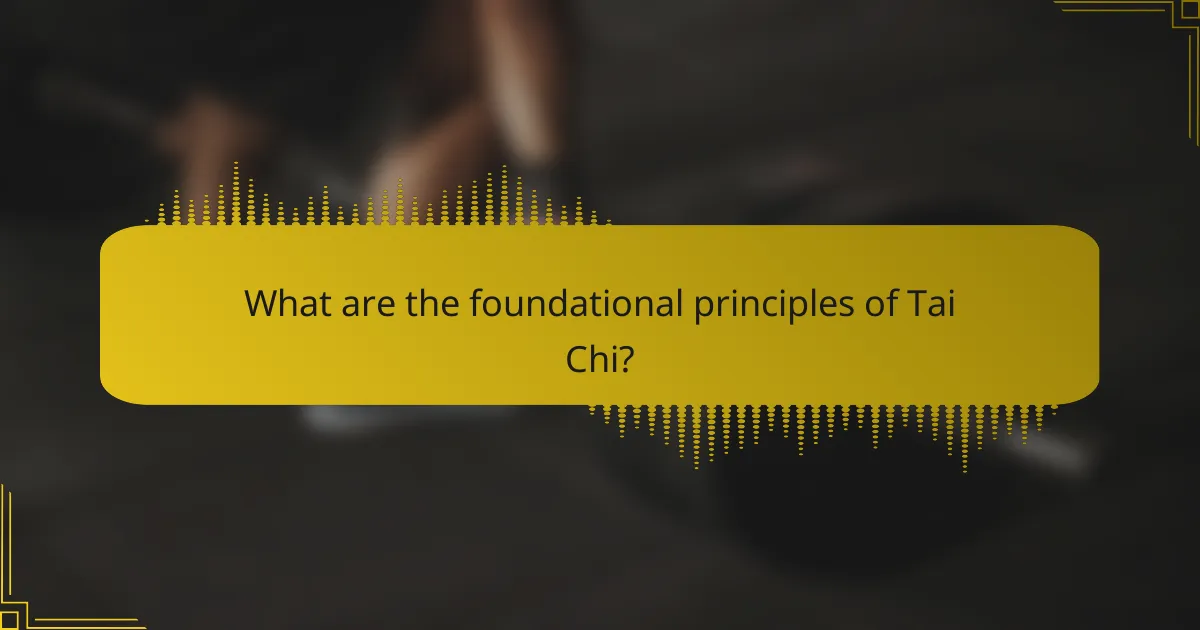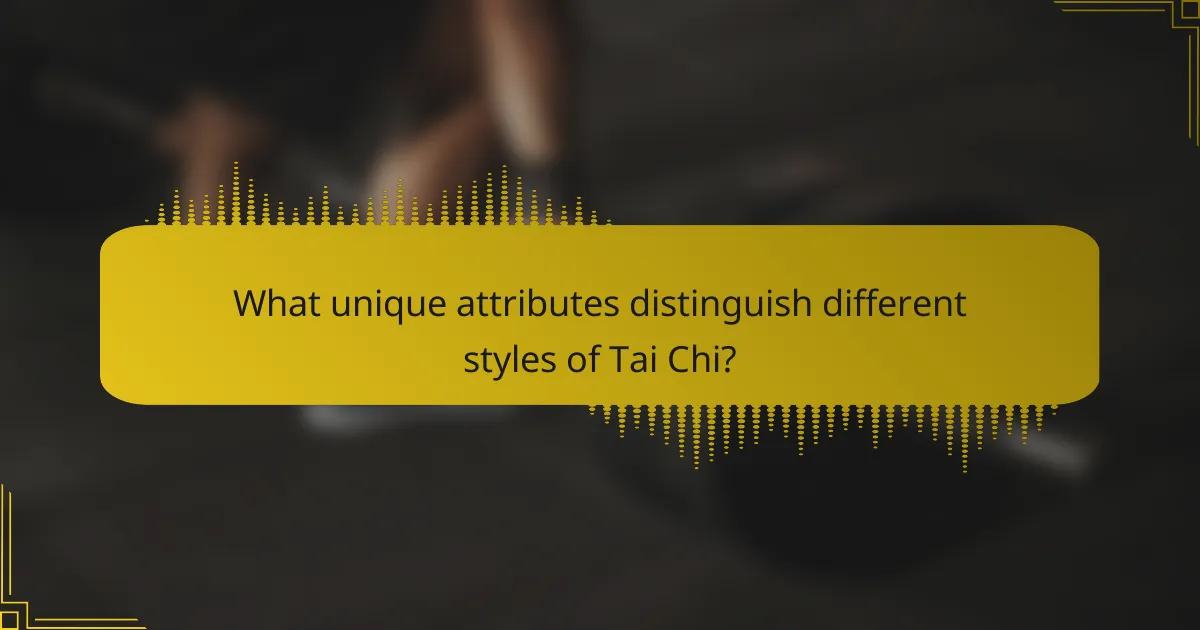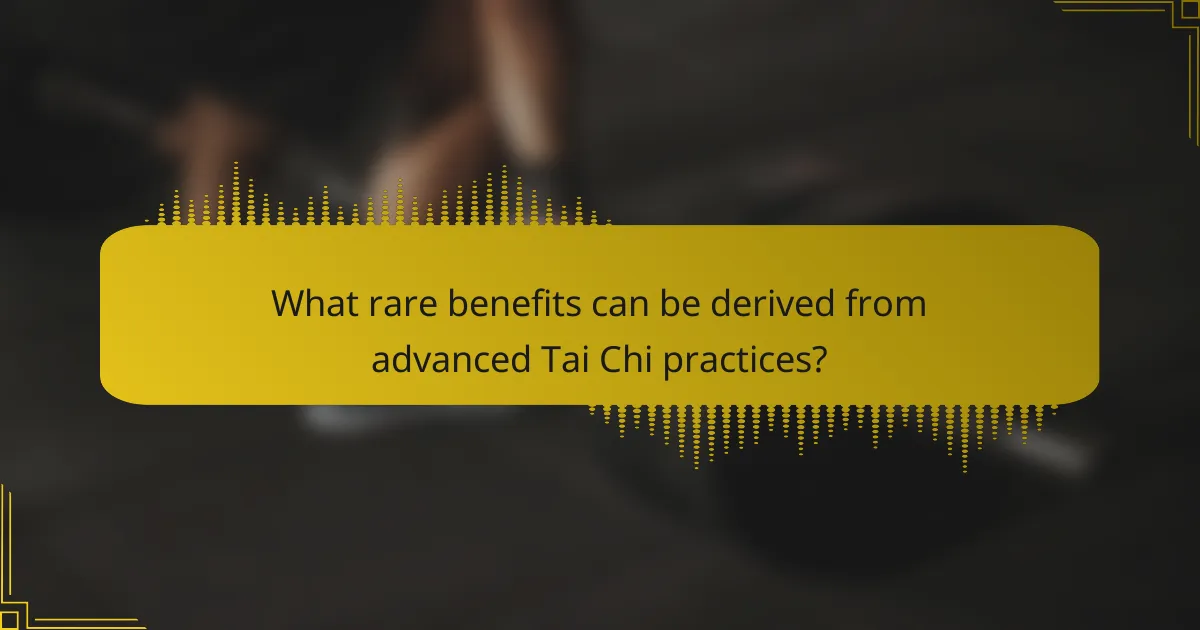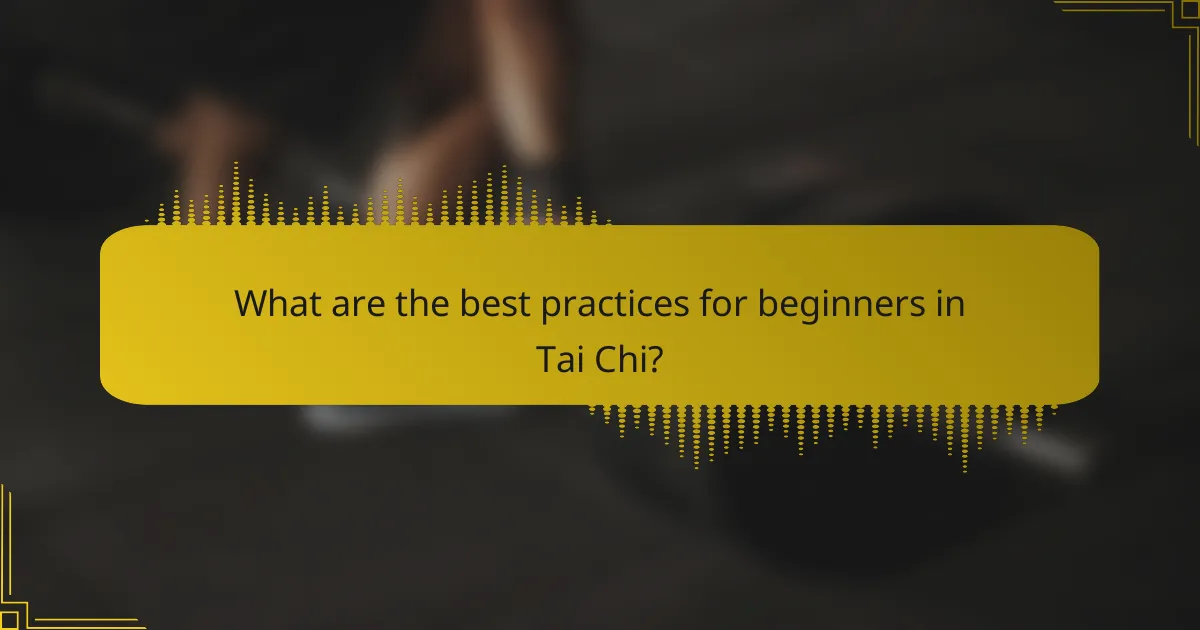Tai Chi offers significant benefits for physical fitness, mental clarity, and stress relief. This practice emphasizes balance, relaxation, and mindfulness through slow, deliberate movements. Various styles, such as Yang and Chen, provide unique attributes that enhance strength and coordination. Beginners can achieve optimal results by focusing on consistent practice, proper posture, and mindful breathing.

What are the foundational principles of Tai Chi?
The foundational principles of Tai Chi include balance, relaxation, and mindfulness. These elements promote physical fitness, mental clarity, and stress relief through slow, deliberate movements. Balance enhances stability and coordination, while relaxation reduces tension and fosters a calm mind. Mindfulness encourages present-moment awareness, improving overall mental health. Each principle interconnects, creating a holistic practice beneficial for both body and mind.
How does Tai Chi enhance physical fitness?
Tai Chi significantly enhances physical fitness through its low-impact movements and focus on balance. This practice improves flexibility, strength, and coordination while promoting cardiovascular health. Regular participation can lead to increased muscle tone and endurance. Additionally, Tai Chi fosters mental clarity and stress relief, contributing to overall well-being.
What are the key movements in Tai Chi that promote fitness?
Tai Chi incorporates fluid movements that enhance physical fitness, mental clarity, and stress relief. Key movements include the following:
1. **Commencing Form** – Initiates practice, promoting relaxation and focus.
2. **Grasping the Bird’s Tail** – Improves balance and coordination through a series of flowing motions.
3. **Wave Hands Like Clouds** – Enhances flexibility and body awareness while reducing tension.
4. **Single Whip** – Strengthens the legs and core, fostering stability and control.
5. **Cloud Hands** – Encourages rhythmic movement, aiding in relaxation and mental clarity.
6. **Closing Form** – Concludes practice, reinforcing a sense of calm and centeredness.
These movements collectively contribute to overall wellness and stress management.
How does Tai Chi improve balance and flexibility?
Tai Chi significantly enhances balance and flexibility through its slow, controlled movements. These practices engage core muscles and improve proprioception, which is the awareness of body position. As a result, participants experience increased stability and a greater range of motion. Research indicates that regular Tai Chi practice can lead to a 30% improvement in balance metrics among older adults. Additionally, the meditative aspect of Tai Chi promotes mental clarity, further supporting physical coordination.
What role does Tai Chi play in mental clarity?
Tai Chi enhances mental clarity by promoting mindfulness and reducing stress. The practice encourages focused breathing and slow, deliberate movements, which can improve concentration and cognitive function. Research indicates that regular Tai Chi practice can lead to increased mental acuity and emotional stability. Additionally, the meditative aspects of Tai Chi help clear the mind, fostering a sense of calm and clarity.
How can Tai Chi practices enhance cognitive function?
Tai Chi practices can significantly enhance cognitive function by improving mental clarity and focus. Research indicates that engaging in Tai Chi can lead to better memory retention and processing speed due to its meditative nature and physical movement. The slow, deliberate motions promote mindfulness, which has been linked to increased cognitive flexibility and executive function. Additionally, regular practice can reduce stress levels, further supporting cognitive health.
What techniques in Tai Chi foster mindfulness and focus?
Tai Chi techniques that foster mindfulness and focus include slow, deliberate movements and deep breathing. These practices enhance mental clarity and reduce stress by encouraging present-moment awareness. Additionally, the meditative aspect of Tai Chi promotes a unique connection between body and mind, facilitating relaxation and concentration. Engaging in consistent practice can lead to improved emotional regulation and overall well-being.
How does Tai Chi contribute to stress relief?
Tai Chi effectively reduces stress by promoting relaxation and mindfulness. This practice combines slow, deliberate movements with deep breathing, which enhances mental clarity and emotional stability. Studies indicate that regular participation in Tai Chi can lower cortisol levels, a hormone linked to stress. Furthermore, the meditative aspect of Tai Chi fosters a sense of calm, allowing practitioners to manage stress more effectively.
What physiological effects does Tai Chi have on stress reduction?
Tai Chi effectively reduces stress through its calming movements and focused breathing. These practices lower cortisol levels, enhance relaxation, and improve mental clarity. The unique attribute of Tai Chi is its integration of mindfulness with physical activity, fostering a holistic approach to stress management. Regular practice can lead to improved emotional resilience and overall well-being.
How can Tai Chi be integrated into daily routines for stress management?
Integrating Tai Chi into daily routines can effectively manage stress. Start by allocating 10-15 minutes each morning for practice. Incorporate Tai Chi movements during breaks at work or while waiting in line. Use online videos for guidance, ensuring proper form. Consider joining a local class for community support and motivation. Regular practice can enhance mental clarity and promote relaxation throughout the day.

What unique attributes distinguish different styles of Tai Chi?
Different styles of Tai Chi are distinguished by their unique attributes, including form complexity, speed, and focus. For example, Yang style emphasizes slow, flowing movements that promote relaxation and mindfulness. Chen style features explosive power and intricate footwork, enhancing strength and agility. Wu style is characterized by a compact frame and soft movements, focusing on balance and precision. Sun style combines elements of Tai Chi and martial arts, promoting quick footwork and lively movements. Each style offers distinct benefits for physical fitness, mental clarity, and stress relief.
How do the Yang and Chen styles differ in practice?
The Yang and Chen styles differ primarily in their approach to movement and emphasis on power. Yang style focuses on slow, flowing, and graceful movements, promoting relaxation and mental clarity. Chen style incorporates explosive power and faster movements, emphasizing martial applications and strength. This contrast affects physical fitness and stress relief benefits, with Yang being more meditative and Chen providing a vigorous workout.
What are the unique benefits of practicing Wu style Tai Chi?
Practicing Wu style Tai Chi offers unique benefits such as improved balance, enhanced flexibility, and increased mindfulness. These attributes contribute to better physical fitness and mental clarity, making it an effective form of stress relief. Wu style emphasizes slow, graceful movements that promote relaxation and harmony within the body. This practice fosters a deep connection between mind and body, leading to a unique sense of well-being. Additionally, the focus on breathing techniques enhances oxygen flow, further supporting overall health.
How does the Sun style Tai Chi incorporate elements of dance?
The Sun style Tai Chi incorporates dance elements through fluid movements, rhythmic patterns, and gracefulness. These aspects enhance physical fitness, promote mental clarity, and relieve stress. The integration of dance fosters a sense of flow, encouraging practitioners to connect mind and body harmoniously. This unique attribute distinguishes Sun style from other Tai Chi forms, making it particularly appealing to those who appreciate artistic expression in their practice.

What rare benefits can be derived from advanced Tai Chi practices?
Advanced Tai Chi practices can yield rare benefits, such as improved proprioception, enhanced balance, and increased energy flow. These benefits contribute to better overall physical fitness, mental clarity, and effective stress relief. Practitioners may experience unique sensations of energy movement, known as “Qi,” which can enhance mindfulness and body awareness. Additionally, advanced techniques may lead to rare instances of heightened emotional stability and resilience, fostering a deeper connection between mind and body.
How can Tai Chi aid in rehabilitation from injuries?
Tai Chi can significantly aid in rehabilitation from injuries by promoting gentle movement and improving balance. This practice enhances flexibility and strength, which are crucial for recovery. Research indicates that Tai Chi can reduce pain and improve range of motion in injured areas. Additionally, it fosters mental clarity and reduces stress, supporting overall well-being during rehabilitation. The unique attribute of Tai Chi lies in its slow, mindful movements, making it accessible for individuals at various fitness levels.
What uncommon techniques in Tai Chi promote longevity?
Uncommon techniques in Tai Chi that promote longevity include mindful breathing, visualization, and the integration of sound. Mindful breathing enhances oxygen flow, supporting cardiovascular health. Visualization techniques improve mental clarity and focus, contributing to stress reduction. Incorporating sound, such as chanting or specific tones, can deepen relaxation and enhance the meditative experience, fostering overall well-being.

What are the best practices for beginners in Tai Chi?
To achieve physical fitness, mental clarity, and stress relief, beginners in Tai Chi should focus on consistent practice, proper posture, and mindful breathing. Regular sessions enhance balance and flexibility while reducing anxiety. Start with basic forms and gradually incorporate more complex movements. Engaging in Tai Chi outdoors can further elevate mood and connection with nature.
How can one create a consistent Tai Chi practice schedule?
To create a consistent Tai Chi practice schedule, set specific days and times each week for practice. Aim for at least three sessions per week, lasting 30 to 60 minutes. Choose a quiet space free from distractions to enhance focus and mental clarity. Gradually increase session duration as you become more comfortable with the movements. Track your progress to maintain motivation and adjust your schedule as needed. Consistency fosters physical fitness, mental clarity, and stress relief, making Tai Chi a beneficial practice.
What common mistakes should beginners avoid in Tai Chi?
Beginners in Tai Chi should avoid rushing through movements, neglecting proper posture, and skipping warm-ups. Failing to focus on breathing and practicing consistently can hinder progress. Additionally, ignoring personal limitations may lead to injuries.
What expert tips can enhance the Tai Chi learning experience?
To enhance the Tai Chi learning experience, practice regularly, focus on breath control, and engage in mindful movement. Use visual aids and seek feedback from instructors. Join group classes for social interaction and motivation. Incorporate meditation to deepen mental clarity and stress relief.